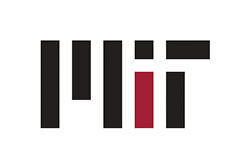Traditional public transport planning textbooks and guidelines indicate a hierarchy of transport modes according to capacity and speed (Vuchic, 2007; UN-Habitat, 2013). Buses are usually recommended for low capacity applications; while rail, in the form of Light Rail Transit, Metro and Regional Rail are generally recommended for medium and high capacity applications. Nevertheless, thanks to the introduction of high capacity bus systems, especially in Latin America and Asia, there has been a challenge to customary approach. This chapter describes the recent history and current status of bus systems known as Bus Rapid Transit and Buses of High Level of Service, highlighting their characteristics and potential. Bus Rapid Transit BRT is a flexible, rubber-tired form of rapid transit that combines stations, vehicles, services, running ways and information technologies into an integrated system with strong identity (Levinson et al. 2003a; Hidalgo, 2012). The definition, developed in the US and extensively used in developing countries in Latin America, Africa and Asia, is focused on the system components. Its European counterpart, Bus with High Level of Service BHLS, also includes simpler priority measures to enhance operations and customer experience. BHLS is defined as an urban transport system integrating a bus or a coach and providing an increase in performance thanks to a triple optimization of: the internal characteristics of the technical and commercial offer; the integration of this offer into the whole public transport network; and the integration of this network into the urban area (Finn et al. 2011). The objectives of BRT and BHLS are to offer reliable, comfortable and low cost urban mobility (Wright and Hook, 2007; Finn et al. 2011). BRT and BHLS are concepts resulting from the evolution of simple bus priority measures, such as designated busways and bus-lanes, which were proposed, and in some cases implemented, as early as 1937 throughout the world (Levinson et al. 2003b). The expression BRT was first used in the United States in 1966 (Wilbur Smith and Associates, 1966). The expression BHLS was introduced in 2007 (Finn et al. 2011). The concepts behind BRT (and BHLS) gained popularity in Latin America after the successful upgrade of busways in Curitiba, Brazil, to full featured BRT in 1982 and the implementation of TransMilenio in Bogotá, Colombia in 2000 (Lindau et al. 2010; Hidalgo & Gutierrez, 2013). The high performance, low cost and rapid implementation of these systems, and adaptations to Quito, Paris, Bogotá, Nantes, Amsterdam Mexico City, Beijing, Jakarta, Los Angeles, Cleveland, Istanbul, and Guangzhou, amongst other cities, made the idea attractive for urban transport planners throughout the world. As July 2014 there were about 180 cities with BRTor BHLS around the world, with 152 cities entering the list in since 2001, and at least 112 cities building, designing or planning BRT systems (BRT Global Data, 2014). BRT and BHLS are attractive options for public transport delivery, applicable to a wide variety of conditions –from low to very high passenger throughput (Munoz & Hidalgo, 2013). Critics of BRT and BHLS indicate that these systems are not permanent, use precious surface space, and exhibit operational and cost indicators that are inferior to rail (Light Rail Now, 2011). As no particular technology is superior to others in all aspects, it is important that BRT and BHLS are fairly analyzed in the process of selecting alternatives for transit improvements (UN-Habitat, 2013; Hensher, 1999). It is also important to indicate that BRT implementation requires strong political leadership, sound technical planning and adequate funding levels (Hidalgo & Carrigan, 2010a; Hidalgo & Carrigan, 2010b). The concepts behind BRT and BHLS are not new, but they have only deployed extensively around the world in the last fifteen years (Hidalgo, 2012; Munoz & Hidalgo, 2013). The growth may be attributed in part to the successes of Curitiba (Lindau et al. 2010) and Bogotá (Rosenthal, 2009), and their adaptations in different parts of the world (Hidalgo & Gutierrez, 2013). In general, BRT and BHLS systems exhibit low implementation cost, rapid implementation and high performance, with significant positive impacts (Hidalgo, 2012; Levinson et al. 2003b). Interesting complementary trends are emerging in the BRT and BHLS industry, such as the implementation of citywide integrated bus systems, improved processes for private participation in operations, increased funding from national governments, and growth of bus manufacturers and technology providers (Hidalgo & Gutierrez, 2013). Technological developments in vehicles and information systems are also improving the quality, performance and impact of BRT (Hidalgo & Munoz, 2013). Despite the growth, some outstanding issues still remain: for example, BRT and BHLS do not have a single meaning and image and are often regarded as a “second best” as compared to rail alternatives (Munoz & Hidalgo, 2013). Their ability to foster urban development and the use of space designated for cars are often questioned, as well as their actual costs and impacts (Gilbert, 2008). Nevertheless, rather than an issue, the use of space formerly designated for cars may be considered a positive feature, as cars are considered the least effective means of transport (Chirs, 2001; Bicycle Innovation Lab, 2011). In addition several systems in the developing world suffer problems resulting from poor planning, implementation and operation, due to financial, institutional and regulatory constraints (Carrigan et al. 2011). Finally, even though service reliability in BRT systems improves in comparison with buses running in mixed traffic, it still remains as a big challenge when compared with rail modes. This chapter adapts and updates a previous publication (Hidalgo, 2012). The first section discusses the concepts of BRT and BHLS. The following sections show the history and current status of BRT in different geographical regions of the world – United States and Canada, Latin America, Europe, Australia and Oceania, and Asia; and the final section highlights some trends and needs.











